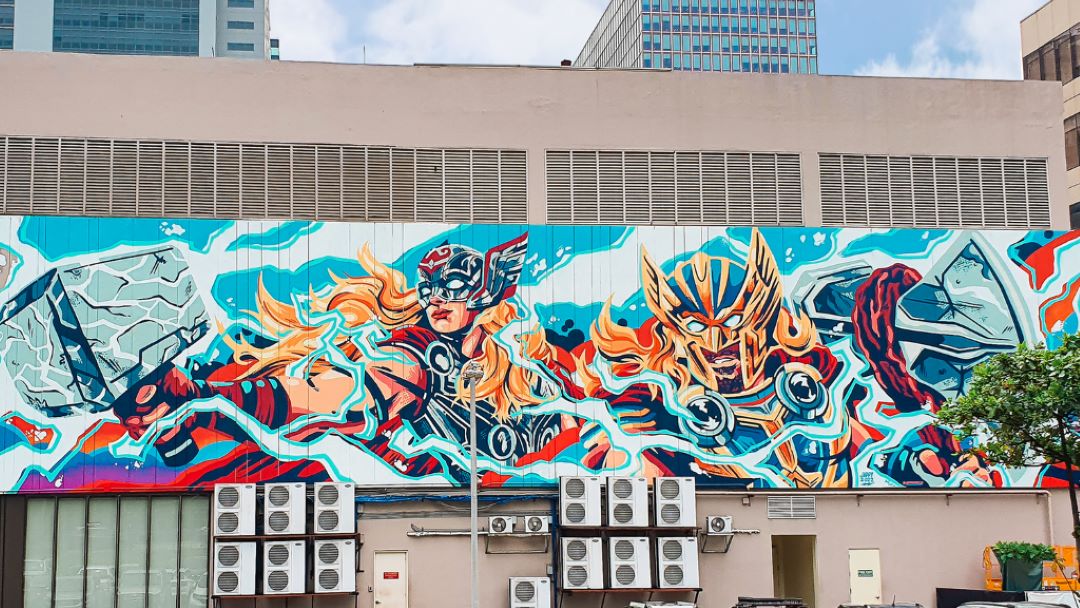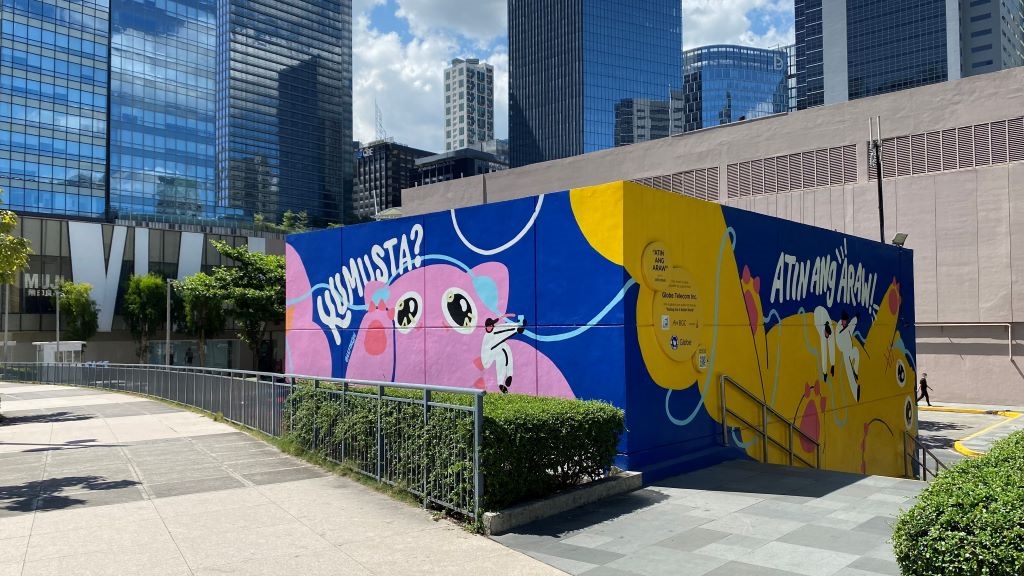
The City As A Canvas: How Public Art Shapes the Urban Fabric
Every city has a unique and valuable identity, depicted by the built environment and the people that live in it. This, however, is not permanent. As cities develop over time, so does its identity – the cultural, historical and economic characteristics of the space. In the local context, many of our cities reflect the rapid and constant change that cities are subjected to. What used to be commercial centers and business districts are overshadowed by deterioration and a wistful past. Communities that once had thriving streets are experiencing loss of confidence and a changing sense of identity. Just the same, with the passage of time, new approaches have also developed within the design and appreciation of our urban spaces. Focusing on Art and Creativity, a city can be revived and transformed to create a new identity and sense of place, also known as Placemaking.
The new Thor: Love and Thunder mural in Bonifacio Global City, commissioned by Disney and Marvel Studios by Jappy Agoncillo
Human beings have a deep-seated need to express emotions—and Art is the medium that translates that into form. It provides an avenue for people to tell a story. Taking the form of murals, installations, sculptures and statues, Public Art lends a hand in tying the collective identity to a space. When locals participate in creating Public Art, people get a sense of ownership and belonging in their neighborhood. This, in turn, creates spaces that make people feel represented.

Atin ang Araw! mural at C1 MRF, BHS Central, 28th Street, Bonifacio Global City
This mural by Zoe Rosal shows compassion seen on the “playfulness of life”, symbolized by the larger-than-life animals with human acts of interest and gratitude linking them.
Just as it promote community ties, Public Art can also provoke a space by allowing the artist to make a statement. It enables people to interact and debate on social issues – to signal tensions with regard to class or gender, or to foster for social change.
“BAKWIT” at the wall of DLS-CSB School of Design and Arts Campus, Malate, Metro Manila, by Archie Ocolos
Archie Oclos Dedicates a 70-Meter painting, now the tallest mural in our country, to Lumad Community. Bakwit, which also means evacuees, depicts the struggles of the indigenous people on socio-political issues. It tells a story of Bakwit siblings trying to survive the militarization of their ancestral land.
Below the mural is a message in Bisaya that says:
Nganong munaog mi sa among mga balay padung sa kasyudaran?
Nganong mapalayas mi sa among yutang kabilin?
Nganong wala mi eskwelahan para sa kolehiyo dinhi sa bukid?
Nganong ginailog sa amo ang among mga alaga nga manok ug baboy?
Nganong ginaguba ug ginailog ang among pananom?
Nganong naay mga militar?
Nganong naay kagubot?
Nganong wala na sila Ipa ug Ima.
Nganong gipatay sila? Ngano? Nganong nagbakwit mi? …gusto ra namo makahuman sa pag-eskwela ug mabuhi.
Translated to Filipino:
Bakit kami bababa sa aming tirahan patungo sa kalungsuran?
Bakit kami mapapalikas sa aming lupang ninuno?
Bakit wala kaming paaralan pang-kolehiyo dito sa kabundukan?
Bakit inaagaw sa amin ang aming alagang manok at baboy?
Bakit winawasak at inaagaw ang aming pananim?
Bakit may mga militar?
Bakit may kaguluhan?
Bakit wala na sina Itay at Inay?
Bakit sila pinaslang?
Bakit?
BAKIT kami BAKWIT? …gusto lang naming makatapos ng pag-aaral at mabuhay.
When contested, Public Art becomes an avenue for democratic dialogue. These exploration of thoughts and ideas contribute to the cultivation of social cohesion. Just how art murals tell stories, Public Art can reinforce the foundation of communities and fabricate new experiences for exchange. Collectively, public art street art, installations, and performances, make enduring impacts on cities.
Photo courtesy of the artists above.


